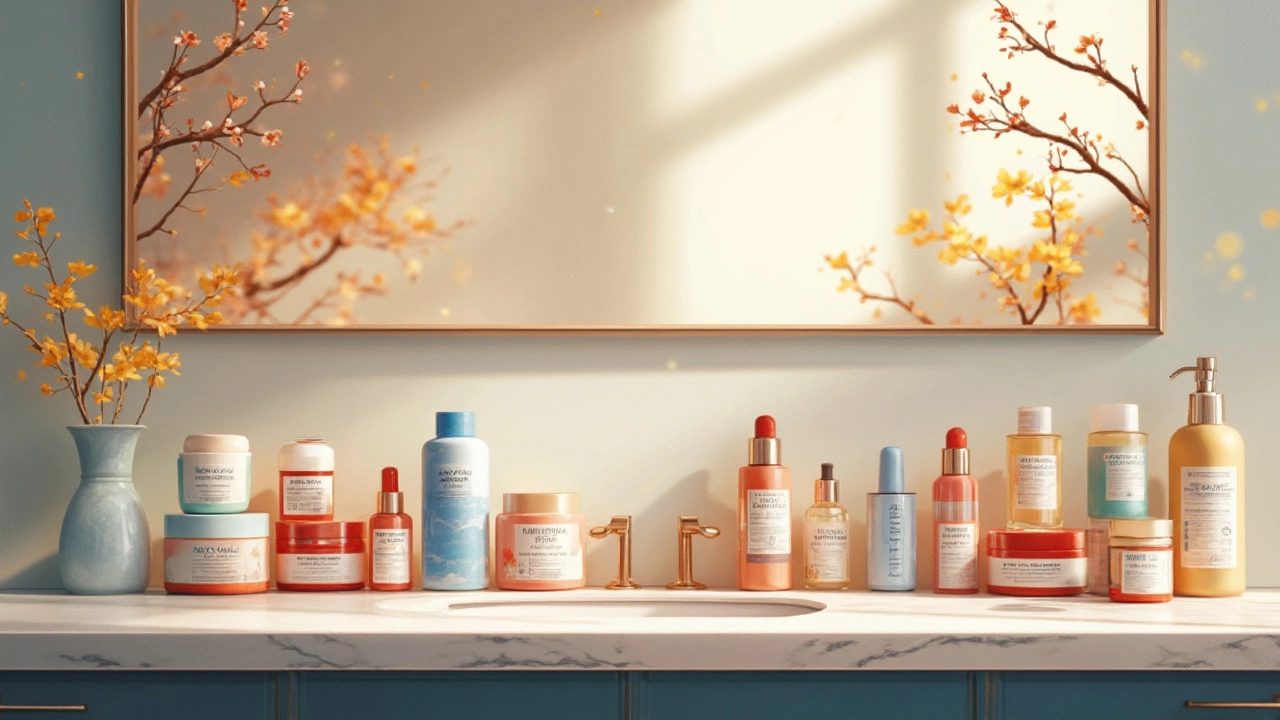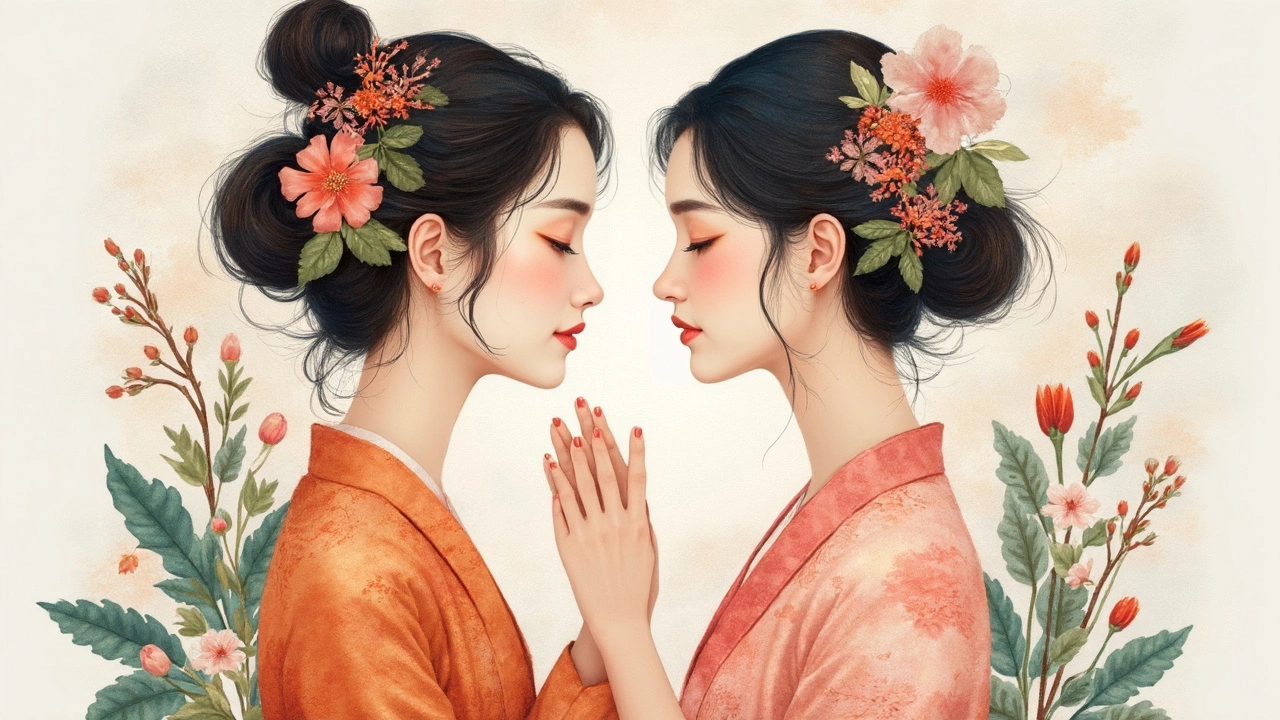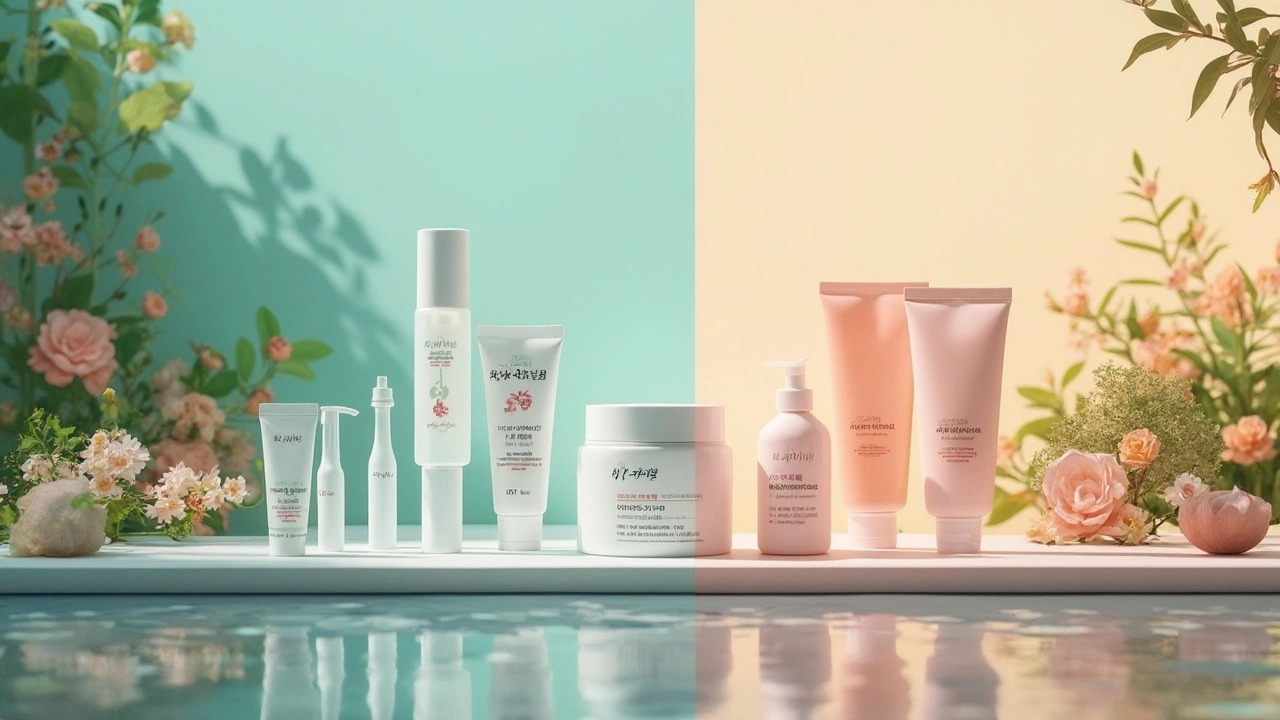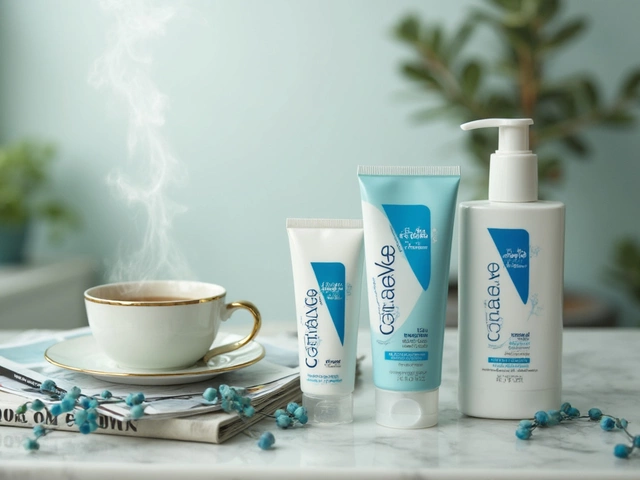So, you're standing in front of a shelf stocked with Korean and Japanese skincare products, and you're thinking, 'What’s the real difference?' Well, you're not alone. Both of these skincare giants boast impressive benefits, but they go about it in pretty distinct ways.
Korean skincare is famous for its ten-step routine. Yep, ten steps. It's all about layering – think essences, serums, and sheet masks. If you’ve got the time and enjoy a detailed ritual, it might be perfect for you. Plus, it's super into hydration, leaving your skin feeling plump and dewy.
Japanese skincare, on the other hand, leans towards simplicity and effectiveness. It focuses on fewer steps, usually emphasizing cleansing and moisturizing. The lovely thing is how much they prioritize natural ingredients and lightweight textures, making it easy for anyone to get started.
Whether you’re fueling your skincare obsession with ampoules or simplifying with some sake-infused lotions, understanding what fits your lifestyle and skin type is key. We'll explore more about each, but keep these basics in mind as you dive deeper into the world of Korean vs. Japanese skincare.
- Foundations of Korean Skincare
- Core Principles of Japanese Skincare
- Key Differences and Similarities
- Popular Products and Ingredients
- Choosing the Right Routine for You
Foundations of Korean Skincare
Korean skincare isn't just a routine; it's a lifestyle that revolves around nurturing and maintaining healthy skin. At its heart is the idea that prevention is better than cure. So, what's the basic philosophy? It's simple: consistent care using a variety of products that hydrate, protect, and nourish your skin.
Multi-Step Routine
Known for its Korean skincare regimen, the multi-step process isn't as daunting as it sounds once you get the hang of it. Here's a quick breakdown:
- Oil Cleanser: Start by removing makeup and impurities with an oil-based cleanser. It’s gentle and effective.
- Water-Based Cleanser: Follow up with a gentle foaming cleanser to dissolve water-based debris. This is called double cleansing.
- Exfoliator: Use this step two to three times a week to remove dead skin, which can clog pores.
- Toner: Prepares the skin to absorb the following products better.
- Essence: This is a lightweight product that hydrates and aids in cell turnover.
- Serum: Target specific skin concerns like dark spots or wrinkles with concentrated formulas.
- Sheet Mask: Use a few times a week for a hydration boost.
- Eye Cream: Gently apply around the sensitive eye area.
- Moisturizer: Locks in all the prior steps and keeps the skin hydrated.
- Sunscreen: Absolutely essential in the morning to protect against UV damage.
Ingredients Spotlight
Korean products are known for their innovative and unique ingredients. Think snail mucin, which sounds a bit wild but is packed with benefits like hydration and anti-aging. Centella Asiatica, often labeled as 'cica', is famous for calming redness and healing. Don’t forget about fermented ingredients either—they’re all about boosting the skin's vitality and health.
Embracing Hydration
Hydration plays a key role in Korean skincare. The philosophy emphasizes keeping the skin plump and dewy, which is often referred to as the 'glass skin' look. It's less about mattification and more about a natural, luminous glow.
So, if you're someone who loves time spent on self-care and doesn't mind a bit of a beauty regimen commitment, Korean skincare might just be your perfect match. But if you’re looking for something different, hang tight as we’ll explore Japanese skincare next.
Core Principles of Japanese Skincare
If there’s one thing you gotta love about Japanese skincare, it's the commitment to purity, simplicity, and timeless beauty. This skincare philosophy has been around forever, and there's a lot to say about why it works so well.
The heart of Japanese skincare is the ‘less is more’ approach. Usually, you're looking at only three or four steps in their routine, focusing heavily on cleansing and hydrating. The aim here is to enhance your skin’s natural beauty without overwhelming it with products.
Double Cleansing
It all starts with double cleansing. The first cleanse usually involves an oil-based cleanser to remove makeup and sunscreen (which you should be using, by the way!). Then comes a water-based cleanser to clear out dirt and sweat without stripping your skin.
“Cleansing is the cornerstone of Japanese beauty. It preps your skin to absorb nutrients and keeps it fresh,” says Chizu Saeki, a renowned Japanese skincare guru.
Hydration and Moisture
After cleansing, it's all about hydration. Japanese products often include ingredients like rice extract and hyaluronic acid. You'd be surprised how much these simple ingredients plump up your skin and give it that youthful glow.
And here’s a tip: The less complicated your routine, the less likely it is your skin will freak out. Japanese brands often emphasize using gentle, non-irritating formulas.
Signature Ingredients
Japanese skincare is big on nature. Think green tea, camellia oil, and sake, which are all loaded with antioxidants and vitamins. These natural goodies aim to soothe, brighten, and rejuvenate your skin.
| Common Ingredient | Benefit |
|---|---|
| Rice Bran | Rich in antioxidants, improves skin's texture |
| Licorice Root | Soothes and evens skin tone |
Ultimately, Japanese skincare teaches us that before getting all fancy with treatments, maintaining a foundation of clean, well-hydrated skin is the secret sauce to looking flawless. Keep it simple, but make it effective.

Key Differences and Similarities
Let's break down the key differences and similarities between these two powerhouse skincare methods. At first glance, both Korean skincare and Japanese skincare might seem like they're cut from the same cloth, but there's more to the story.
Differences: What's Unique?
When it comes to the number of steps, Korean skincare can't be beat. Its multi-layered routine involves anywhere from 7 to 10 steps. It's a skincare journey that’s all about indulging, focusing loads on hydration and brightening.
Meanwhile, Japanese skincare aims for simplicity and ease. Usually consisting of around 3 to 5 steps, it emphasizes cleansing thoroughly to take off dirt and makeup, followed by toner and moisturizer. It's about efficiency and comfort, without giving up on results.
Ingredient-wise, Korean products are often loaded with innovative components like snail mucin or centella asiatica. These are trendy, experimental, and sometimes out-there, while Japanese products tend to prioritize safe, tried-and-true ingredients like rice extract and hyaluronic acid for hydration.
Similarities: What's Common?
Both routines share a strong commitment to moisturizing. Any fan of either will tell you that hydration is at the heart of healthy skin. Additionally, both often spotlight sunscreens – they certainly know the value of sun protection.
Beyond products, the philosophies also resonate. In both cultures, skincare is often seen as self-care, as predictable as brushing your hair, offering not just maintenance but relaxation and pampering.
Core Benefits
Though their methods differ, the core benefit remains similar: achieving smooth, healthy skin. Whether you're swearing by the gorgeous, milky-finish offered by Japanese lotions or the glass skin glow from Korean serums, there's something there for everyone.
So, whether you're a fan of time-honored traditions or the newest breakthroughs, there's no one-size-fits-all. Understand what each routine is offering, then blend and tweak to fit your own skincare needs.
Popular Products and Ingredients
Both Korean skincare and Japanese skincare have standout products and ingredients that fans worldwide swear by. If you’re trying to decide which might fit into your skincare routine, here’s the scoop.
Korean Skincare Must-Haves
Korean skincare is known for its innovative and unique products. Sheet masks are practically synonymous with Korean beauty. They’re soaked in rich serums, perfect for that extra hydration boost on a relaxed evening. Then there are essences, which act as a lightweight version of serums and are great for adding moisture.
Don't forget about the trend of BB creams, which combine moisturizer, foundation, and sunscreen into one. And have you ever heard of snail mucin? It may sound strange, but it's a cult favorite for its anti-aging properties and healing effects.
Japanese Skincare Essentials
Japanese skincare often zeros in on achieving smooth, radiant skin. Think cleansing oils. These are gentle yet effective, combining oil and water for a refreshed finish. Another staple you'll find is rice bran, an ingredient celebrated for its brightening effects and its lovely, silky texture.
Japanese products also lean heavily into sun protection with some of the finest sunscreens available. They’re lightweight, effective, and perfect for daily use without that greasy feel.
Compare and Contrast
- Korean skincare focuses more on layering and hydration, whereas Japanese skincare emphasizes simplicity and a natural finish.
- Both embrace technology and nature, but Japanese products often use traditional ingredients in their formulas, like green tea and camellia oil.
- Korean beauty tends to push the boundaries with new concepts like glass skin, while Japanese skincare stays rooted in traditional rituals.
| Product Type | Korean Skincare | Japanese Skincare |
|---|---|---|
| Moisturizers | Snail mucin, sheet masks | Rice bran, lightweight gels |
| Cleansers | Cleansing balms | Cleansing oils |
| SPF Protection | BB creams | Innovative sunscreens |
Figuring out whether Korean or Japanese skincare fits best is all about understanding your skin's needs. Both have something amazing to offer, depending on whether you love lengthy pampering routines or simple, effective solutions.

Choosing the Right Routine for You
Figuring out whether to lean towards Korean skincare or Japanese skincare can be like trying to pick between your favorite desserts—each is delightful in its own way. But deciding which one’s better for you really depends on your own skin’s needs and your lifestyle. Let’s break it down.
Know Your Skin Type
The first step is knowing what your skin actually needs. If you have dry skin, you might find Korean skincare's focus on moisture and hydration a big win. On the flip side, if you have oily skin, you might appreciate Japanese skincare's emphasis on lightweight, clean-feeling products.
Think About Time and Effort
If you’ve got plenty of time in the morning or evening and you love layering products, dive into the world of Korean skincare. It’s more than a routine; it’s a ritual. But, if you prefer something a little more straightforward, Japanese skincare could be your jam, with its focus on a no-fuss, efficient approach.
Consider Your Budget
Both Korean and Japanese products come in a range of prices. Korean products are known for being innovative at a wallet-friendly cost, which is why many people find them appealing. Japanese products might cost a little more, especially if you're going for luxury brands, but the focus on high-quality ingredients can be worth the splurge.
Test and Adjust
Skincare is personal, so one way to find out what truly works for you is to try a bit of both and tweak as needed. Maybe you'll fall in love with a Korean essence and a Japanese sunscreen. It’s all about balance!
Here’s a simple comparison of key features to help you decide:
| Feature | Korean Skincare | Japanese Skincare |
|---|---|---|
| Routine Complexity | Multiple steps, detailed | Simple, efficient |
| Focus | Hydration, innovation | Purity, quality ingredients |
| Price Range | Typically affordable | Mid to high-end |
Picking the right skincare doesn’t always mean strictly choosing one over the other. Mix and match to create a routine that fits your unique skin and life.


